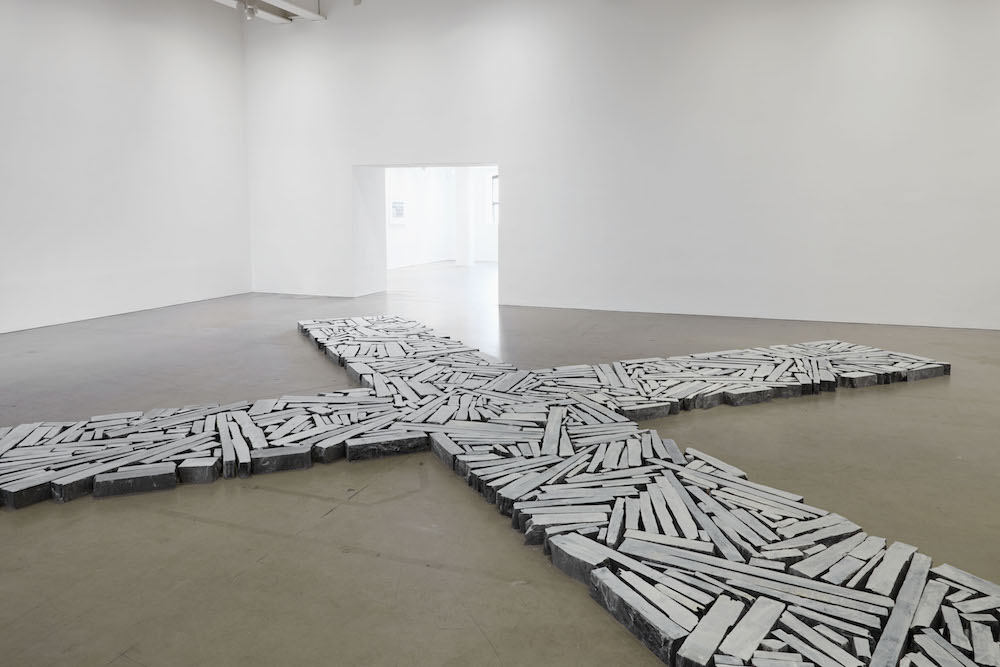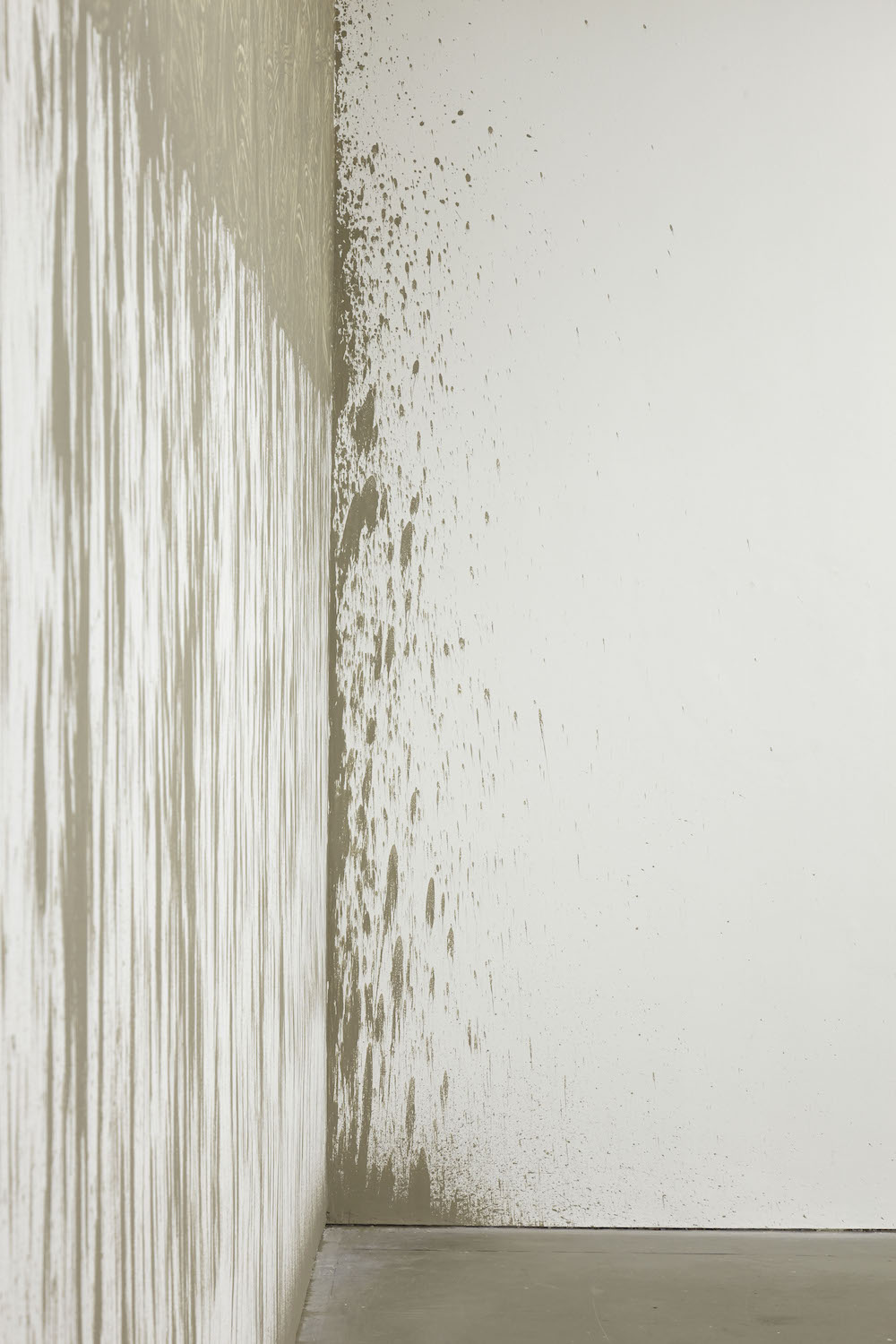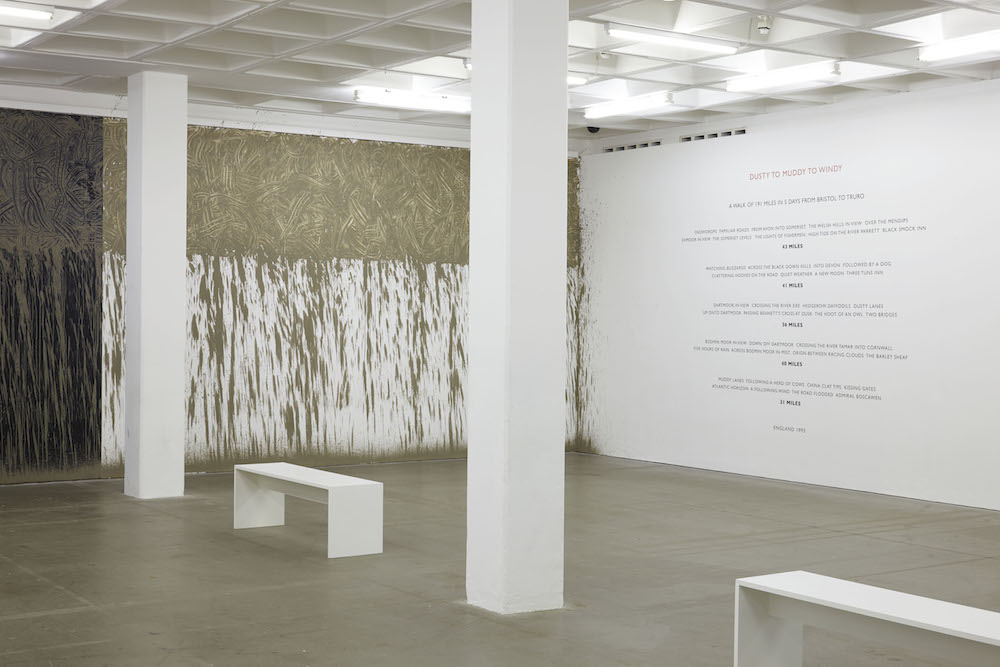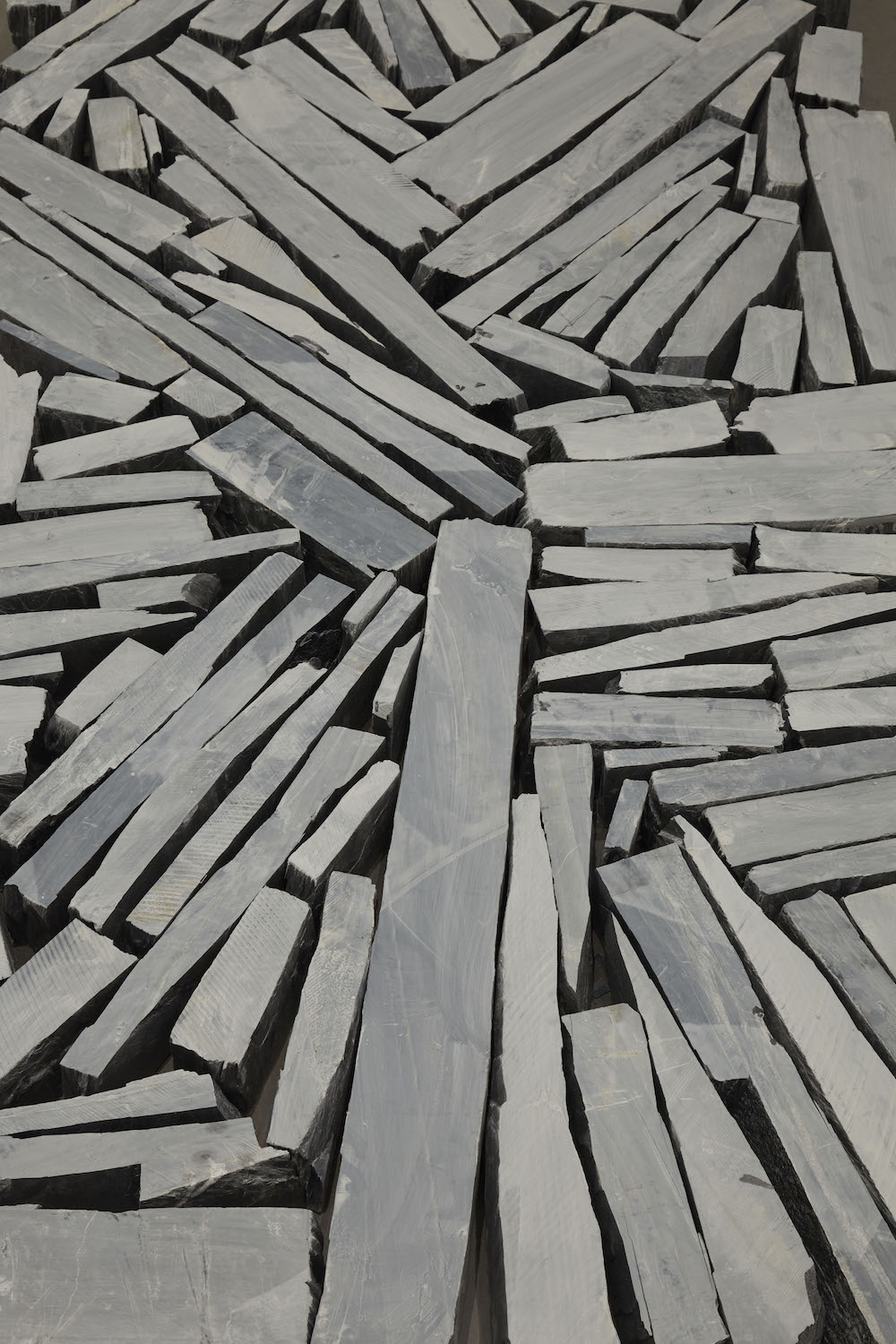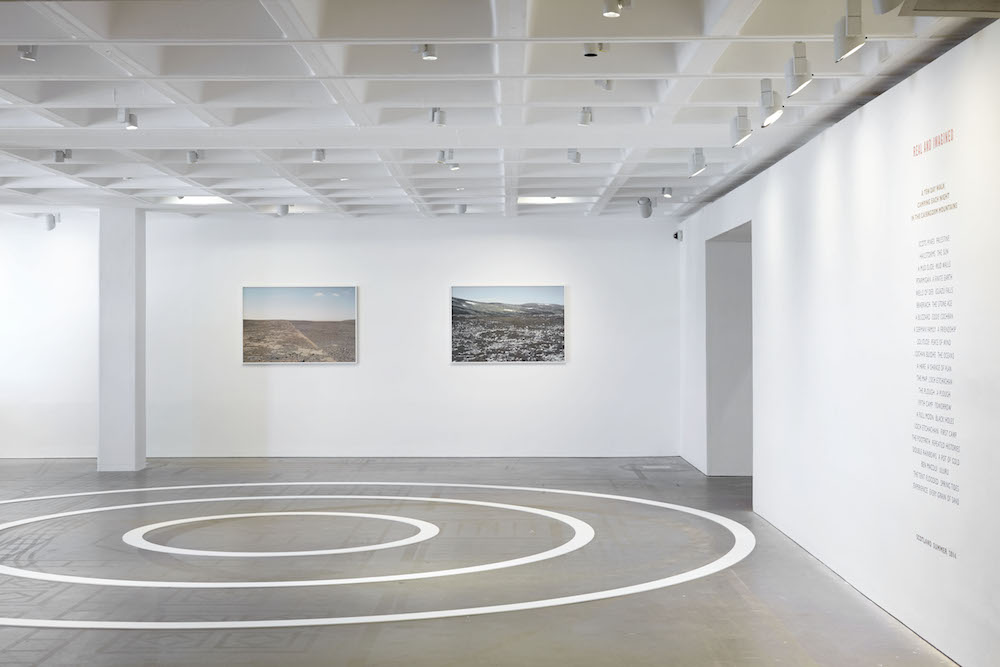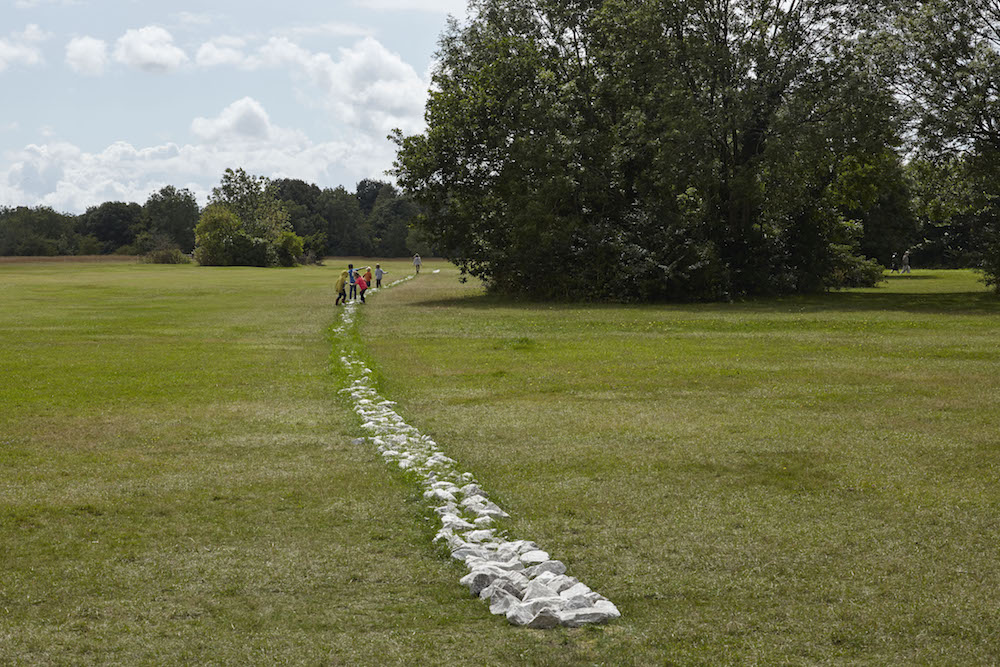Walking is the magic ingredient in artist Richard Long’s work. It’s an activity he undertakes with a distinct stoicism – he’s walked across the Himalayas, the Andes, and the Cairngorms for hours, days and sometimes weeks on end.
A born-and-bred Bristonian, Time and Space at the Arnolfini Centre for Contemporary Arts is the first major exhibition of his work in his hometown for 15 years, and it includes seven new works alongside pieces dating back to 1967. A Land Artist, Long is inspired by landscapes and nature, and often references ideas of time, space and ephemerality in his photographs, sculptures, text works and paintings.
In the first room, we are reminded of Long’s connection to the West Country landscape. The back wall is splattered and caked in a generous covering of River Avon mud – the river that quietly slips by outside the gallery. Along the top, it swirls with a vigorous energy, whilst the bottom is lightly splattered with soft drips, making one think of water, rivers, speed and energy. Called Muddy Waterfall (2015), the work is one of Long’s ‘mud paintings’ that he explained are very quick to make, and only take “45 minutes.” Adding: “What I like about it is that the top half is the work, and I let nature do the rest. So I’m really showing you the forces of nature.”
Alongside the mud painting are a number of text works, which expand on the theme of walking, movement and engagement with the British landscape. Red Walk (1986) for example, features a body of typographic text that documents a walk Long took from his home in Bristol to Dawlish in England. Picking out punctuations of red along his walk, it refers to a ‘Gypsies’ Fire’, a ‘Cock Pheasant’s Face’, and ‘A Plough’. Mud Walk (1987) recounts a 187-mile-walk Long took across England from the mouth of the Avon to the source of the River Mersey, during which he cast handfuls of mud into each.
Upstairs, we’re introduced to some of Long’s more far-flung adventures. Stones in the Andes (2012) features a circle of stones gathered in the Andes that look like ancient stone circles made by druids in remote English countryside. With a wry nod to the music that he loves, Rolling Stones (2008) documents a walk through Norway where he arranged a line of enormous, craggy rocks. Mangan Circle, Nepal (1983) depicts a circle of stones in a landscape as wanderlust inspiring as an Ansel Adams photograph.
Long at his best is simple, visceral, epic and dramatic – something particularly evident in his sculptures. Time and Space (2015) is a sharp right-angled cross, made of shards of blue-grey Cornish slate. A distinct shape, the work acts like a marker, or religious monument. Boyhood Line (2015) is an off-site work among the verdant daisies and grass of the Bristol Downs, where Long used to play as a child. A meandering line of 170 meters made of white sandstone, it’s a work intimately tied to time passing, and space staying static – the stones marking the path that he walked as a boy.
Richard Long: Time and Space is open at Arnolfini, Bristol until 15 November 2015.
